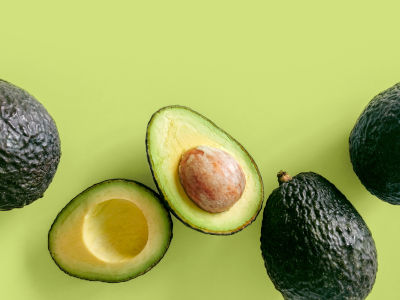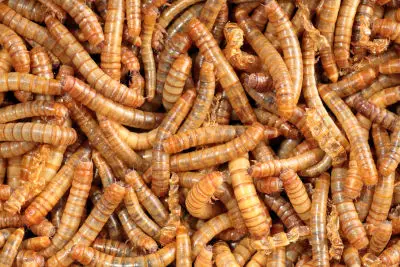How Often to Clean a Leopard Gecko Cage?
Want to know the best frequency to clean Leopard Gecko Cage? Well, let me explain this for you. I will explain how often, what you should use to clean and what you should not be doing.
How Often to Clean a Leopard Gecko Cage? You need to do this daily, weekly, monthly plus ad-hoc periodic cleaning. This the ideal requirement to insure that your Leo is well looked after and to avoid the build up of any bacteria or diseases.
| Are these foods dangerous for your Beardie? | |
| Avacado? Click here to learn, from this guide, if this food is dangerous |  |
| Superworms? Click here to learn, from this guide, if this food is dangerous |  |
Now that you know the frequency of cleaning, let’s delve into a bit more detail and see what you should use to clean, what items you need to clean. Where to put your lizard while you clean and more.
What happens if you don’t keep your Leos cage clean?
In this section I’m going to explain what happens if you don’t keep your tank clean and the reasons why you should be doing this. Just so you can appreciate and understand the benefit of keeping to this routine.
It can seem a little bit Mundane and boring but it is critical to keep your leopard gecko happy and lead a long life.
When lizards are in the wild nature has a way of dealing with things naturally. For example, rainwater will fall, which will rinse and clean animals and locations. There are also natural cycles of nature, such as plants growing, then eaten by other animals. This is a natural example of how nature is cleaning up after itself.
However, your pet leopard gecko in captivity cannot do this. It is relying on you to do everything, for example, they cannot wait for the rain to come down to clean and rinse their tank. They cannot rely on natural environmental occurrences to keep them clean. So you have to be the one that makes all of this happen on a regular basis.
If you don’t continue to maintain your pets tank then unfortunately you will encounter really bad smelling odours. You can also notice bacterial infections building in the tank, which can, in extreme circumstances, lead to the untimely death of your lizard. Which you obviously want to avoid.
You may notice build up of an unsightly layer of dirt, which can make it very hard to actually see through the glass tank that you are using, which is not ideal.
Cleaning Schedule
In this section I’m going to explain how you can follow a simple but effective routine to maintain and make sure that your leopard gecko is well looked after. If you stick to this routine, even if it’s not exactly to the word, you will greatly increase your chances of having a happy and healthy leopard gecko.
The Daily clean
For this daily clean, the idea is to do a quick spot clean that removes obvious things, such as faeces, old food that’s remaining, that hasn’t been used and cleaning up substrate such as paper towels.
If you are using lizards Sand as substrate then this should be cleaned up (more on this in detail later on in the article). Also if you have water, which you should have in the tank, make sure that it is refreshed on a daily basis. You should have fresh water for them at all time,
Lastly, if there’s any signs of shedded skin, remove the skin from the tank. Finally, if there’s any unsightly spillages, obviously get rid of this as well. Simple, huh?
The weekly Clean
In the weekly schedule this is a more in-depth, thorough clean. And will require you to actually rinse and clean all the sides of the tank (more information on this later on). You will also need to remove items from the tank, to give it a proper clean.
When you are rinsing/cleaning the sides of the tank, another thing that you can consider using is a detergent bleach and water mix. (I will go through a more detailed explanation of what you can use later on in the article).
During this weekly clean, if you have tank cage carpet substrate, this needs to be cleaned. Also if you have any any substrate rocks in the tank, these need to be wiped down as well. In addition to this, if there are any old decaying plants, they should also be replaced.
Any other items that you have in the tank that are dirty, such as other toys or things for your reptile to entertain itself, should be cleaned or wipe down during this time.
You will need to relocate your lizard to another tank or holding area while you clean up. The idea is to give the tank a proper clean out so that when your lizard returns it’s nice fresh and clean.
The monthly schedule clean
For the monthly clean, this is taking the deep clean to the next level, some may argue that you don’t even need to do this level of cleaning on such a regular monthly interval. You can make a decision if you want to deviate from this frequency. This is your own personal preference.
Essentially you want to do a deep clean here. Again, all items need to be removed from the tank, so you can do this properly and give the tank a thorough clean.
One thing, when I say deep clean, I mean every corner of the tank needs to be scrubbed. You may even need to get an old toothbrush out just to make sure that there is no areas missed, are you with me?
The Periodic cleaning schedule
This periodic cleaning schedule are tasks that need to be done on more of an ad-hoc basis. For example, substrates, such as sand, will need to be completely replace every couple of months or so.
Also if you have any other substrate that may need to be changed this is the time to do it. You will need to use some common sense here, if it really needs changing then change it, are you with me? Basically you maintain it.
At this time, it may even be a great opportunity to remove or replace certain items, such as old rocks. Or maybe even rearrange your tank to improve the decor. And, again this goes without saying that you will need to relocate your lizard at this time, for this to be done properly.
Related Questions:
How do you Safely Clean Sand Substate?
Firstly you need to rinse this and to make sure that you get it clean. To do this, run some hot water and rinse the water through the sand. Stir the water and the sand around. Let it settle and then do this a few times to clean through the sand.
For the final time that you do this, rinse add some water conditioner to clean through properly. This conditioner is used to remove any dirt in the sand, the type I mean is the one that is used to remove chlorine.
You can typically find this water conditioner in most pet shops. You just need to follow the instructions and add sparingly.
How can you make sure that your Leo tank is really dry after you finish cleaning?
One thing to understand is that if you do not completely dry your tank after you have cleaned it, you can find out that bacteria may start to grow in these areas. It is very important to make sure that it is bone dry before you put everything back to where it was.
The first thing that you want to do is get hold of some paper towels and dry it down completely until it is 100% dry. After using paper towels to dry down the actual tank itself, make sure that it you leave it to air dry.
At the same time all the other items that were in a tank, for example rocks or any other items such as toys, leave them to dry separately. So, all the items, including the tank itself, drys naturally.
What is the safest way to make sure that you can remove debris or feaces from the tank?
Debris inside of a tank, such as feaces, can some harmful bacteria. Therefore it is very smart to protect yourself by wearing protective gloves. The kind of gloves that you need to use are the ones that you can pick up, use and then throw away after you’re finished.
Therefore any bacteria that may have picked up in your gloves can be discarded. Just remember this, some lizards can carry salmonella and other diseases, so it is important to make sure that you protect your hands when you are handling items inside of the tank, even if it is not feaces.
First you need to establish where the real messy areas are in the tan. Once you get to know your leopard gecko you will probably find a habit developing, where it will poop (Click here to find out if Leopard Geckos Pee) in the same area over and over again.
So, if you need to pick up the faeces you can usually find it in this same corner of the tank. The good thing about this is that this poop is likely to be quite dry and hard so it shouldn’t be too messy as you pick it up.
Simply pick it up with the gloves that you have and dispose of it. If you are actually using paper towels as a form of substrate in the tank, just make sure that you completely clean and replace the paper towel each time.